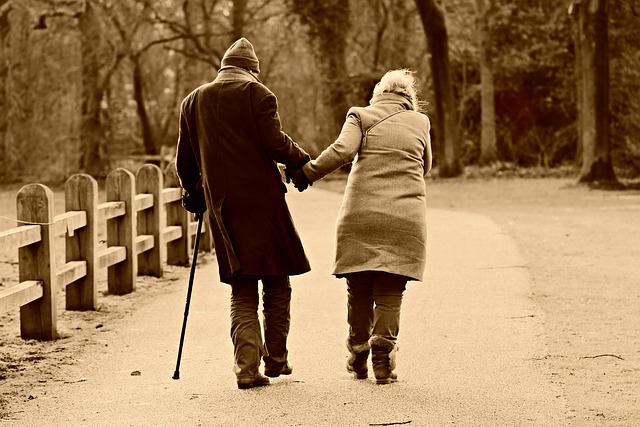 You know what? Getting older is a drag! That’s right, not what I signed up for when I started this cruise. As soon as you start to get a clue, someone takes the wind out of your sails. Why is it that the less you know about what you are doing, the more energy you have to do it with? How does that make any sense? All I can figure is that Mother Nature astutely surmised that once we get a clue, we figure out that having kids is way too much work. For the survival of the species, it works out better to give all the energy to the reproductive young before they figure this out. Otherwise, there would be no kids and no future for the species.
You know what? Getting older is a drag! That’s right, not what I signed up for when I started this cruise. As soon as you start to get a clue, someone takes the wind out of your sails. Why is it that the less you know about what you are doing, the more energy you have to do it with? How does that make any sense? All I can figure is that Mother Nature astutely surmised that once we get a clue, we figure out that having kids is way too much work. For the survival of the species, it works out better to give all the energy to the reproductive young before they figure this out. Otherwise, there would be no kids and no future for the species.
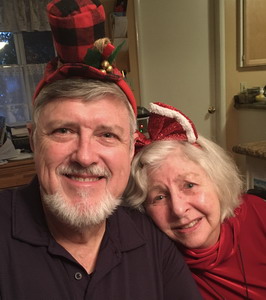 Ellen is complaining that I am not old enough to really appreciate this truth. I still talk to my kids as though they are humans. I have not yet gotten to the age where they threaten to put me away in a crazy old coot farm. Ellen is at that age, but she wisely had no kids and is left running around (metaphorically) without that threat. On the other hand, maybe the crazy is why Mother Nature pulls away the energy. The world can only tolerate so much crazy.
Ellen is complaining that I am not old enough to really appreciate this truth. I still talk to my kids as though they are humans. I have not yet gotten to the age where they threaten to put me away in a crazy old coot farm. Ellen is at that age, but she wisely had no kids and is left running around (metaphorically) without that threat. On the other hand, maybe the crazy is why Mother Nature pulls away the energy. The world can only tolerate so much crazy.
 Anyway, the key issue I am whining about here is energy, or lack thereof. The question we have to ponder though is the lack of energy really about simply aging? I have seen pictures of centenarians in various cultures still out working the fields just like the young guys. Is aging really the sole cause of this loss of energy, or is there another story that might be found? What do we find in these cultures that have large numbers of hale and hearty old folks that we are missing? The answer to this question has several factors that work together to produce the excellent health results we see – diet, exercise, social networks, metabolic health, and more. In this article, I am focusing on exercise.
Anyway, the key issue I am whining about here is energy, or lack thereof. The question we have to ponder though is the lack of energy really about simply aging? I have seen pictures of centenarians in various cultures still out working the fields just like the young guys. Is aging really the sole cause of this loss of energy, or is there another story that might be found? What do we find in these cultures that have large numbers of hale and hearty old folks that we are missing? The answer to this question has several factors that work together to produce the excellent health results we see – diet, exercise, social networks, metabolic health, and more. In this article, I am focusing on exercise.
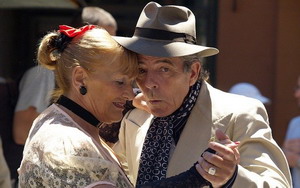 What do I see in my office? Consistently the folks that are dancers, long-distance bike riders, tennis players, and super gym rats look and act younger than their peers. Exercise keeps them younger and more energetic. This correlation has been studied for many years, and regular vigorous exercise will add 2 to 10 years to your life. An extra interesting correlation is seen when exercise is added to social connection, like in tennis and dancing. These are the exercises that provide the best results. Where exercising in the gym by yourself will add a couple of extra years to your life, exercising while also socializing adds 7 to 10 years to your life.
What do I see in my office? Consistently the folks that are dancers, long-distance bike riders, tennis players, and super gym rats look and act younger than their peers. Exercise keeps them younger and more energetic. This correlation has been studied for many years, and regular vigorous exercise will add 2 to 10 years to your life. An extra interesting correlation is seen when exercise is added to social connection, like in tennis and dancing. These are the exercises that provide the best results. Where exercising in the gym by yourself will add a couple of extra years to your life, exercising while also socializing adds 7 to 10 years to your life.
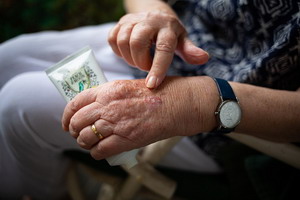 However, the biggest challenge I find with so many of my patients is how to get exercise of any kind at all into their lives. Joints need regular movement to keep working. Without movement early arthritis results, and it is regular exercise movement that is the best remedy for these arthritic joints – not pills and not surgery, exercise. This is where the energy challenge defeats so many folks. They don’t exercise because they don’t have the energy to exercise. Then without the exercise, the joints start to hurt and get stiff, so now even thinking about exercise is painful. The net result is these folks end up sitting most of the day. A little puttering around the house might happen, but not enough to slow down the gradual degeneration of the hip, knee, and back joints. These joints need regular stress to keep them healthy. In the “use it or lose it” reality of health, they are losing it. The belief is that if you can keep it from hurting that everything will be okay. This is completely not true. Without the amount of stress on the joints necessary to produce some discomfort, the body assumes you don’t even need what you have. It is the level of stress that tells your body that you want to do more. Without stress, it degenerates. The same thing happens in our psyche.
However, the biggest challenge I find with so many of my patients is how to get exercise of any kind at all into their lives. Joints need regular movement to keep working. Without movement early arthritis results, and it is regular exercise movement that is the best remedy for these arthritic joints – not pills and not surgery, exercise. This is where the energy challenge defeats so many folks. They don’t exercise because they don’t have the energy to exercise. Then without the exercise, the joints start to hurt and get stiff, so now even thinking about exercise is painful. The net result is these folks end up sitting most of the day. A little puttering around the house might happen, but not enough to slow down the gradual degeneration of the hip, knee, and back joints. These joints need regular stress to keep them healthy. In the “use it or lose it” reality of health, they are losing it. The belief is that if you can keep it from hurting that everything will be okay. This is completely not true. Without the amount of stress on the joints necessary to produce some discomfort, the body assumes you don’t even need what you have. It is the level of stress that tells your body that you want to do more. Without stress, it degenerates. The same thing happens in our psyche.
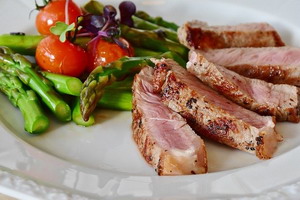 What can we do about this lack of energy? Well, where does energy come from? It comes from the digested food you have eaten. From your digestive tract, it has to be carried in your bloodstream to the tissues that need the food. Once there, the tissue has to open up in response to the signals from insulin to let the food into the cells. And once inside the cells, it has to get to healthy mitochondria which turns the food into chemical energy. So if you have poor digestion, or poor circulation, or poor response to insulin, or poor mitochondria, you end up with low energy. Exercise addresses the middle two of these four steps to energy. Exercise builds and maintains your circulatory system and exercise helps improve insulin sensitivity. Clearly, most of America is not exercising enough as 80% of Americans have insulin resistance and heart disease/stroke is the number one cause of death.
What can we do about this lack of energy? Well, where does energy come from? It comes from the digested food you have eaten. From your digestive tract, it has to be carried in your bloodstream to the tissues that need the food. Once there, the tissue has to open up in response to the signals from insulin to let the food into the cells. And once inside the cells, it has to get to healthy mitochondria which turns the food into chemical energy. So if you have poor digestion, or poor circulation, or poor response to insulin, or poor mitochondria, you end up with low energy. Exercise addresses the middle two of these four steps to energy. Exercise builds and maintains your circulatory system and exercise helps improve insulin sensitivity. Clearly, most of America is not exercising enough as 80% of Americans have insulin resistance and heart disease/stroke is the number one cause of death.
For those of you that are already on board with your exercise program, good job! You just got validation for all that hard work. For those who are needing a prompt to get started with some sort of regular movement, the rest of this newsletter is for you. Where do we start?
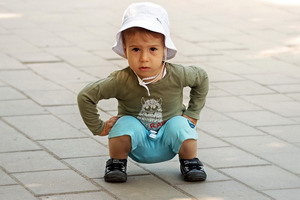 Conceptually, exercise breaks down in my mind into four simple things – push, pull, squat, and balance. One way or another these four activities will prepare you for most of life’s activity needs. Let’s take the simplest to relate to – a squat. Getting up from a chair requires you to engage your squat muscles – the ones that bring you up from the squat. Picking something up from the floor or pulling out the bottom drawer in your chest of drawers all require squat muscle engagement. Going up or down stairs – same muscles. Even putting on your socks and shoes requires squat muscles. What muscles are those? Those are your quads, glutes, and hamstrings along with your core stabilizers to keep you balanced while you engage those muscles. The Hindu Squat is my daily morning exercise. Check out a good example here.
Conceptually, exercise breaks down in my mind into four simple things – push, pull, squat, and balance. One way or another these four activities will prepare you for most of life’s activity needs. Let’s take the simplest to relate to – a squat. Getting up from a chair requires you to engage your squat muscles – the ones that bring you up from the squat. Picking something up from the floor or pulling out the bottom drawer in your chest of drawers all require squat muscle engagement. Going up or down stairs – same muscles. Even putting on your socks and shoes requires squat muscles. What muscles are those? Those are your quads, glutes, and hamstrings along with your core stabilizers to keep you balanced while you engage those muscles. The Hindu Squat is my daily morning exercise. Check out a good example here.
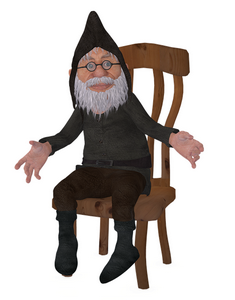 Also good is stationary lunges in which you simply move your weight from one leg to the other and do a gentle knee bend on the weight-bearing leg. And of course the most basic of all is chair squats. Simply get up from a seated position several times. The lower the chair seat, the more work is involved.
Also good is stationary lunges in which you simply move your weight from one leg to the other and do a gentle knee bend on the weight-bearing leg. And of course the most basic of all is chair squats. Simply get up from a seated position several times. The lower the chair seat, the more work is involved.
 What about your push and pull muscles? Mostly we are talking about your arm and shoulder muscles, again with core stabilizers to keep you from falling over. In a gym you would be thinking of push-ups and pull-ups. In real life, you push and pull on doors, push away from a table or to get out of bed, and pull every time you pick something up or help yourself up from an awkward position. Clearly, from these examples, the push and pull muscles do not need as much strength as the squat muscles (unless you do a lot of rock climbing). So doing 100 push-ups and 20 pull-ups every morning is not necessary. A simple push-up anyone can start with is a standing push-up against a wall and progressing to pushing against a counter or table. This avoids the issues of not being able to get down on the floor to do exercises. If these are too easy, you can do push-ups with your knees supporting you while on your bed.
What about your push and pull muscles? Mostly we are talking about your arm and shoulder muscles, again with core stabilizers to keep you from falling over. In a gym you would be thinking of push-ups and pull-ups. In real life, you push and pull on doors, push away from a table or to get out of bed, and pull every time you pick something up or help yourself up from an awkward position. Clearly, from these examples, the push and pull muscles do not need as much strength as the squat muscles (unless you do a lot of rock climbing). So doing 100 push-ups and 20 pull-ups every morning is not necessary. A simple push-up anyone can start with is a standing push-up against a wall and progressing to pushing against a counter or table. This avoids the issues of not being able to get down on the floor to do exercises. If these are too easy, you can do push-ups with your knees supporting you while on your bed.
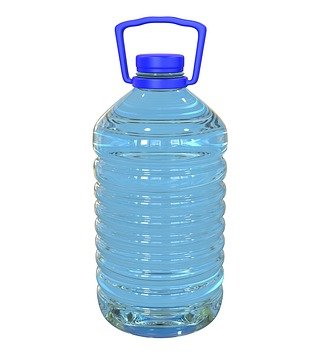 Pull-up exercises usually require some sort of weight or exercise band when done at home. For a really basic beginning, use a milk jug or 1-gallon water jug. With a water container, you can adjust the amount of water to match your current strength. Place the jug on the floor, bend over and pull the jug up to your chest. Another pull exercise is to hold onto the jug while standing and lift it up like you were going to take a drink. Another interesting pull exercise is to open a door and grasp the doorknobs on each side. With your toes touching the edge of the door, lean back and pull yourself forward toward the door several times.
Pull-up exercises usually require some sort of weight or exercise band when done at home. For a really basic beginning, use a milk jug or 1-gallon water jug. With a water container, you can adjust the amount of water to match your current strength. Place the jug on the floor, bend over and pull the jug up to your chest. Another pull exercise is to hold onto the jug while standing and lift it up like you were going to take a drink. Another interesting pull exercise is to open a door and grasp the doorknobs on each side. With your toes touching the edge of the door, lean back and pull yourself forward toward the door several times.
Balance exercises are a whole newsletter on their own which I have done before. My favorite reference for building core strength is to go to the youtube channel called Foundation Training and select two or three exercises you find attractive.
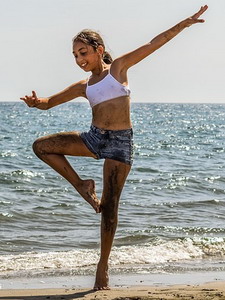 Additional at-home training includes rapid foot movement for balance. Just step forward a tiny step then back then to the right and to the left. Repeat this pattern as fast as you can. This will help you catch your balance when you are walking, which is rather important. Another one is alternating one-foot balance. This is like walking in place except standing on one foot for at least three seconds before switching to the other foot. Start this with your eyes open and graduate over time to this with your eyes closed. Another basic balance is to bend at the waist forward and backward and to each side. Start with your feet your hip’s width apart and gradually do this with your feet closer and closer together. Finally, do this with your eyes closed. Closing your eyes simulates what happens to your balance when your attention is somewhere other than on your walking. There are a thousand variations to these exercises, and the more variety you engage the better it is for your health.
Additional at-home training includes rapid foot movement for balance. Just step forward a tiny step then back then to the right and to the left. Repeat this pattern as fast as you can. This will help you catch your balance when you are walking, which is rather important. Another one is alternating one-foot balance. This is like walking in place except standing on one foot for at least three seconds before switching to the other foot. Start this with your eyes open and graduate over time to this with your eyes closed. Another basic balance is to bend at the waist forward and backward and to each side. Start with your feet your hip’s width apart and gradually do this with your feet closer and closer together. Finally, do this with your eyes closed. Closing your eyes simulates what happens to your balance when your attention is somewhere other than on your walking. There are a thousand variations to these exercises, and the more variety you engage the better it is for your health.
 Earlier I was writing about the cardiovascular benefits to exercise. You can achieve some of these benefits by simply walking fast for 20 minutes or so. I see a lot of people doing just that these days as they go past my front door. But if you are housebound for any reason, it is useful to know that you can get a full cardiovascular workout from something as simple as the Hindu squat. Weight training also has the same heart-building benefits as traditional aerobic training. So if you are not the type to get in a quick 20 miles on your bicycle, that is okay. Anything that gets your heart rate up for a while will do the trick. And remember, the more of this you can do with someone else, the better it is for you. This is why I see dancers stay so young, they have dance partners.
Earlier I was writing about the cardiovascular benefits to exercise. You can achieve some of these benefits by simply walking fast for 20 minutes or so. I see a lot of people doing just that these days as they go past my front door. But if you are housebound for any reason, it is useful to know that you can get a full cardiovascular workout from something as simple as the Hindu squat. Weight training also has the same heart-building benefits as traditional aerobic training. So if you are not the type to get in a quick 20 miles on your bicycle, that is okay. Anything that gets your heart rate up for a while will do the trick. And remember, the more of this you can do with someone else, the better it is for you. This is why I see dancers stay so young, they have dance partners.
Here is a little inspirational music: I Like To Move It (Original Video) Madagascar HD
Take care,
David
